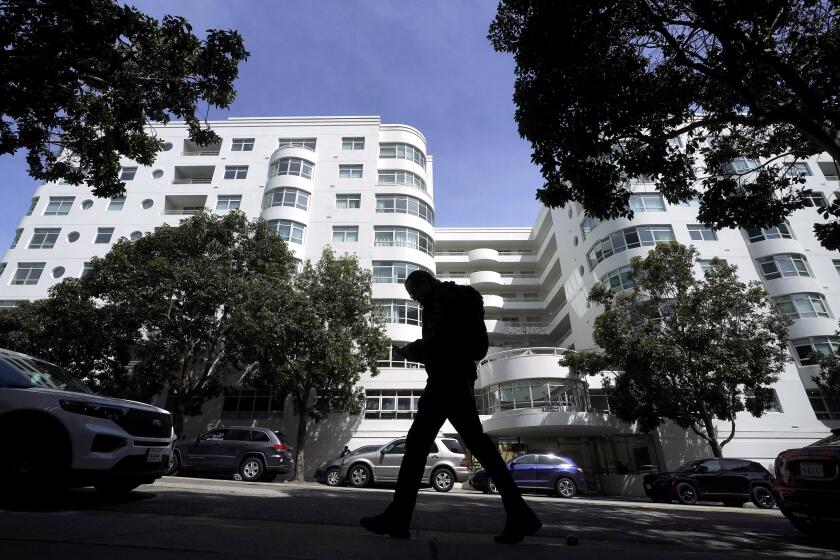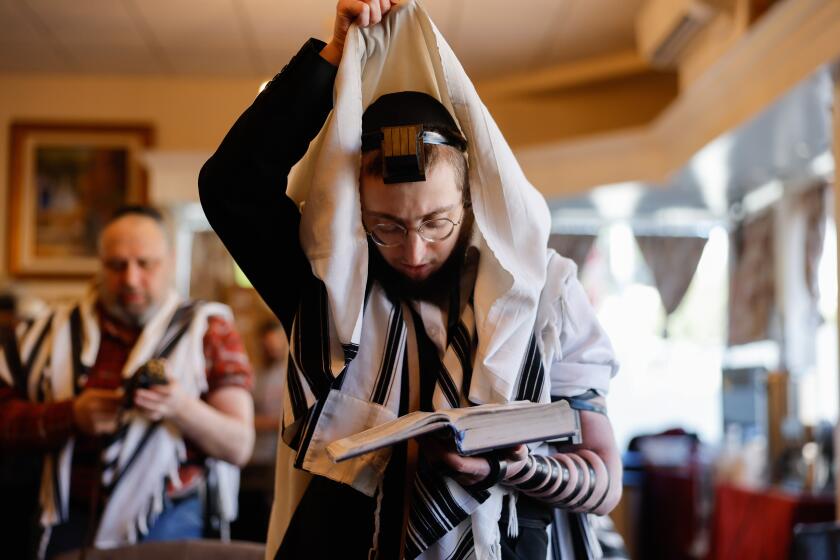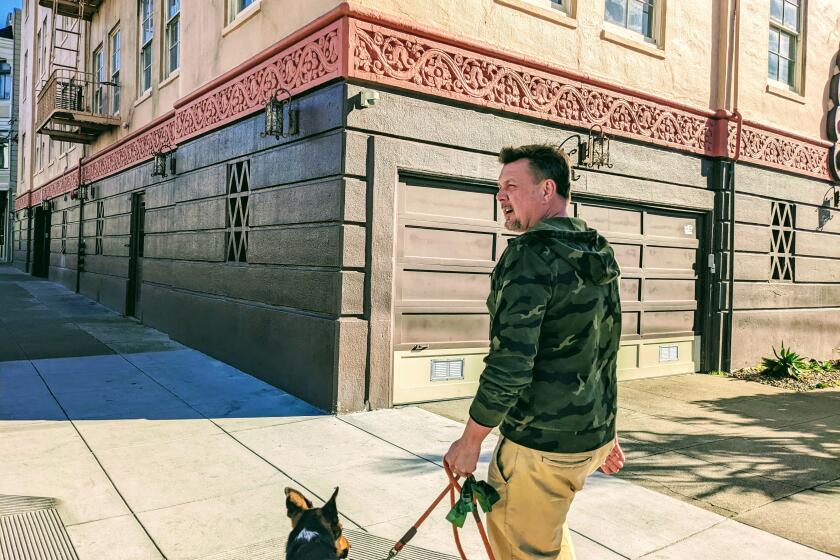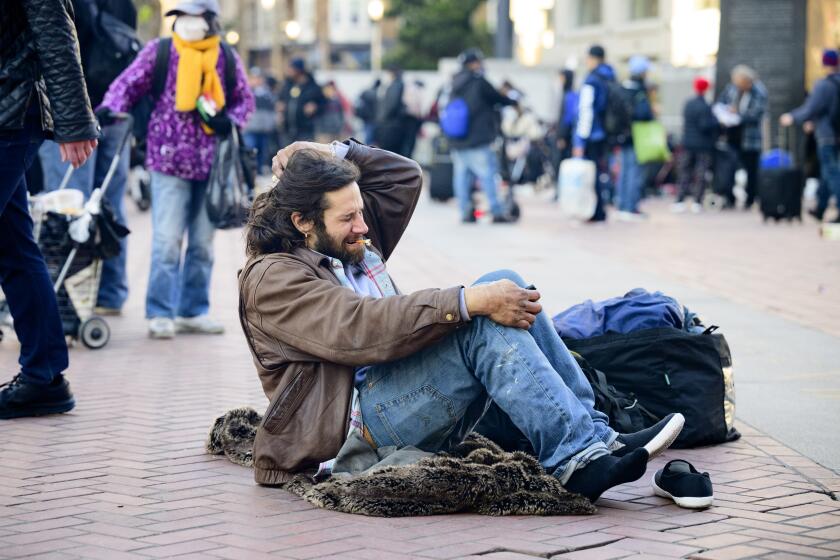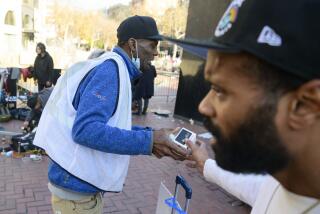Elon Musk, others claim San Francisco crime out of control. But the numbers tell a different story
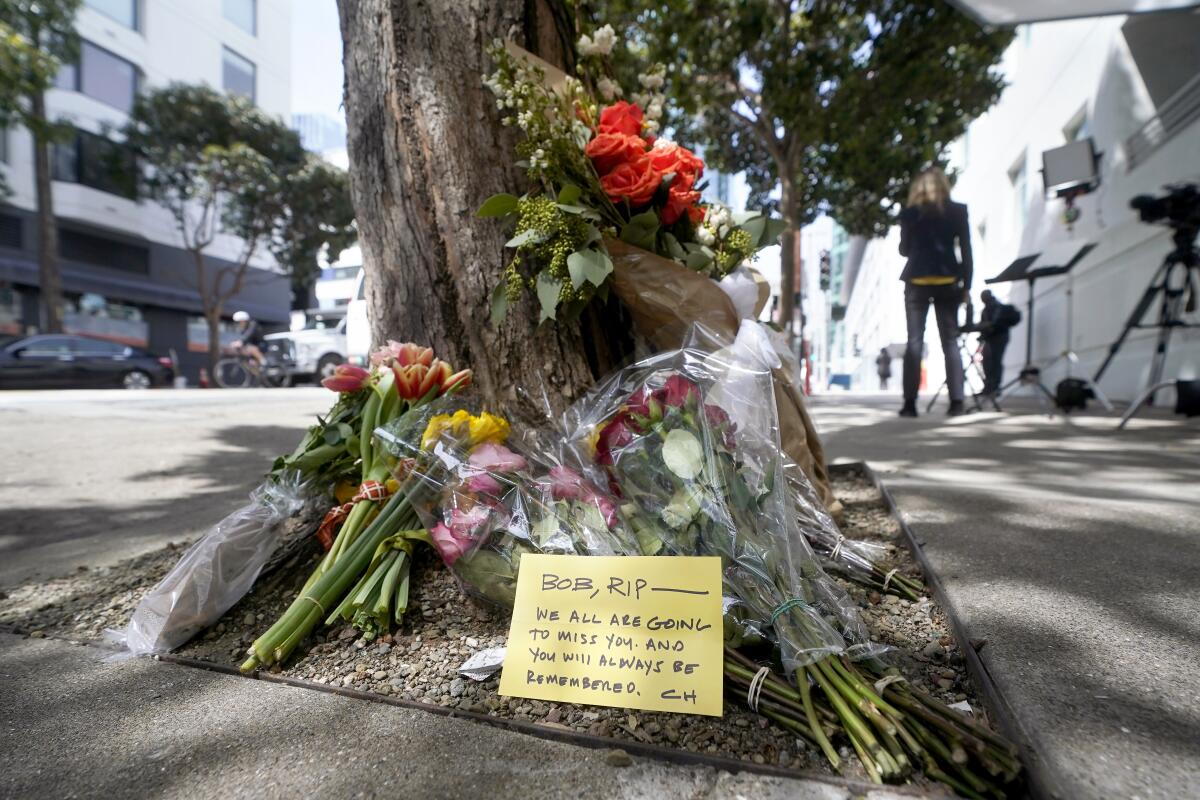
- Share via
The stabbing death of Cash App founder Bob Lee this week has sparked expressions of fear among some residents and tech industry leaders over crime rates in San Francisco.
But experts say violent crime in the City by the Bay isn’t higher than other cities of a similar size and has actually declined over the last decade. And some city leaders are pushing back against the crime narrative.
A 43-year-old man identified by family and friends as Lee was found by police Tuesday morning suffering from stab wounds on Main Street in the Rincon Hill neighborhood of San Francisco, according to a San Francisco Police Department news release. Lee died later at a hospital.
Lee was a chief product officer at cryptocurrency startup MobileCoin and previously worked as chief technology officer at the payments platform Square, which has since been renamed Block. Lee developed Cash App in 2013.
Lee moved to Miami in October but was in San Francisco for a MobileCoin leadership summit and decided to stay a few more days in order to spend time with friends, said his friend Doug Dalton, who had dinner with him this past Saturday.
Family and friends of Cash App founder Bob Lee mourned the loss of their loved one after the tech executive was fatally stabbed in San Francisco this week.
In the wake of Lee’s death, tech executives, including Twitter CEO Elon Musk, have decried the violence in the city, where progressive Dist. Atty. Chesa Boudin was recalled by voters last year after being criticized as “soft on crime” and neglecting to address public safety and homelessness.
Musk tweeted: “Violent crime in SF is horrific and even if attackers are caught, they are often released immediately.”
Venture capitalist Matt Ocko, who was a friend of Lee’s, tweeted that Boudin “and the criminal-loving city council that enabled him and a lawless SF for years, have Bob’s literal blood on their hands.”
Violent crime, defined by the California Department of Justice as homicide, rape, robbery and aggravated assault, peaked in 2013 in San Francisco with 7,064 incidents. The rate has fallen over the last decade, down to 4,796 incidents in 2020 before undergoing a slight uptick to 4,887 incidents in 2021. The state agency has yet to release crime statistics for 2022.
San Francisco Police Commissioner Kevin Benedicto pointed out that San Francisco’s violent crime rate is lower than that of other major cities.
“Overall, if you look at the last five years and 10 years on a longer-term scale, crime is at a historic low,” he said. “San Francisco has public safety issues like every big city and it’s unfairly portrayed as being in the midst of a crime wave that isn’t born out of the data.”
Dmitri Mishin is accused of firing blanks inside an orthodox synagogue in San Francisco. The congregants are left to grapple with a shattered sense of safety and a fear that no one cares.
Though San Francisco recorded 56 homicides in 2022, the number was much smaller than other cities of a similar size, such as Denver with 88 homicides, Nashville with 108, Oklahoma City with 71 and Columbus with 140, according to data from the Major Cities Police Chiefs Assn.
Benedicto emphasized that not much information has been released about the stabbing and the investigation is ongoing.
“You see a lot of hyperbole and false narratives, whether it’s about the crime rate or people trying to connect it to homelessness or other issues, but we don’t know if it’s even connected to this incident,” Benedicto said. “I want to encourage people to focus on the victim and not on advancing a political agenda or exploiting this tragedy.”
Sen. Scott Wiener (D-San Francisco) also pushed back against the narrative that San Francisco is grappling with high rates of violent crime.
“I do think it’s unfortunate that we’re seeing this narrative that San Francisco is some exceptionally violent place. That’s not true,” he said.
In regards to Lee’s death, Wiener said “one murder is too many.” He also criticized Musk’s comments about the tragedy, calling him “a self-serving opportunist who couldn’t care less about San Francisco.”
Unlike its counterparts nationwide, homicides barely rose in San Francisco, but thefts and break-ins have surged.
Kimberly Richman, a professor of criminal justice and legal studies at the University of San Francisco, noted that since the homicide rate is low in San Francisco, an increase of a few cases each year makes the situation appear more dire than it is.
San Francisco police responded to 56 homicides both in 2022 and 2021, up from 46 homicides in 2020 and 41 in 2019, according to police data.
“When people home in on something like year to year difference in a category that’s already very small, that looks amplified from year to year,” she said. “That can be mitigated by doing a wider focus and looking at crime rates over time and seeing this isn’t really much of a change, but folks don’t typically do that.”
Attention on crime rates in the city has also been bolstered by social media and apps such as Nextdoor, a social networking site where neighborhoods can post tips and alerts, Richman said.
“Our crime rates and murder rates are way lower than they were in the 1990s, but in the ‘90s we didn’t have access to the same amount of information in the moment,” she said. “The reality is that these things were happening, but we just didn’t know about it to the same degree.”
Richman said Lee’s death has served as a lightning rod for discourse on the city’s crime rate because of his high-profile status and the neighborhood in which he was killed.
“A high-profile murder like Bob Lee, who was a white, wealthy, upper-class public figure in a neighborhood you don’t associate with crimes rates, it’s going to seem like it’s here too and out of control,” she said. “We know there’s a lot more attention paid to violent crimes and murder in which there was a white victim, and so these cases really grab the public’s attention.”
Column: Overdose prevention reaches a critical crossroad in San Francisco. What will Mayor Breed do?
San Francisco opened a semi-legal safe drug consumption site, then shut it months later with no real plans for another, as the fentanyl crisis grows.
Though San Francisco has experienced a relatively low violent crime rate, the city has the highest property crime rate in the state, and in particular driven by larceny and car break-ins, said Magnus Lofstrom, policy director of criminal justice and a senior fellow at the nonpartisan Public Policy Institute of California.
Property crime in the city rose by 16.9% in 2021, according to the California Department of Justice’s Criminal Justice Statistics Center. The Bay Area has the highest rate of property crime in the state, with a rate of 2,718 incidents per 100,000 residents.
The reason for San Francisco’s high property rate, Lofstrom said, is difficult to pinpoint, but a contributing factor could be the large number of visitors the city receives for its size.
“When we generate these crime rates, what we use is the number of reported crimes per residents of that area,” he said. “There’s a large number of tourists and nonresidential workers coming into the city and they could possibly be the victims of these property crimes.”
More to Read
Sign up for Essential California
The most important California stories and recommendations in your inbox every morning.
You may occasionally receive promotional content from the Los Angeles Times.
